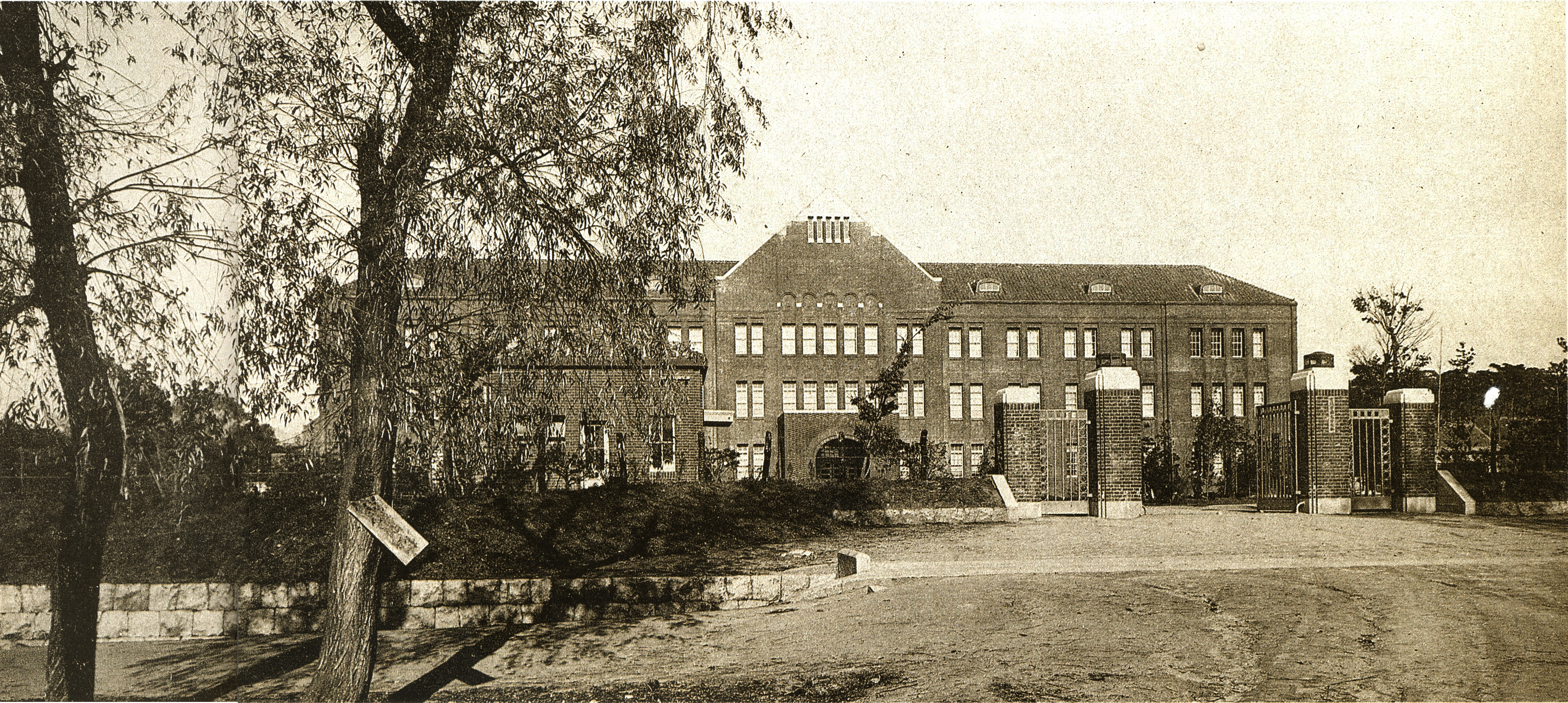|
Jindo Dog
The Jindo dog () is an indigenous dog native to the island of Jindo in South Korea. It is also known as () and formerly known as the Chindo dog. It is one of South Korea's National Treasures. It has a reputation for being loyal and good at tracking things. Due to its protected status within South Korea, only dogs born on Jindo Island can be officially registered as a Jindo by the Government of South Korea after an inspection. The dog was registered as a breed by the United Kennel Club on January 1, 1998 and by the Fédération Cynologique Internationale in 2005. The pronunciation (Jindo-gae) also means an official term for warning measures issued in the event of a localized threat situation. Description Appearance Jindos are double-coated spitz-type dogs. The keen and alert appearance of the Jindo gives the impression of intelligence, strength, loyalty, and agility. Other features include forward-pointing upright ears. Body Korean Jindo owners have traditionally divided Jin ... [...More Info...] [...Related Items...] OR: [Wikipedia] [Google] [Baidu] |
Jindo County
Jindo County (''Jindo-gun'') is a county in South Jeolla Province, South Korea. It consists of the island of Jindo and several smaller nearby islands. Jindo Bridge connects Jindo county with Haenam county. Together with Jindo Island, Jindo County contains an archipelago of about 230 small islands, of which only 45 are inhabited by 4,855 people. Women made up 50.4% of the total county population of 29,538 in 2015. Most of the land is covered by forests (60%) and cultivated fields (30%).Present situation , Jindo County The county tree is '' Malchilus thunbergii'', the flower and the bird the swan. The local food specialties are |
Brindle
Brindle is a coat (animal), coat coloring pattern in animals, particularly dogs, cattle, guinea pigs, cats, and, rarely, horses. It is sometimes described as "tiger-striped", although the brindle pattern is more subtle than that of a tiger's coat. Brindle typically appears as black stripes on a red base. The stripes are eumelanin (black/brown pigment) and the base is phaeomelanin (red/yellow pigment), so the appearance of those pigments can be changed by any of the genes which usually affect them. * Eumelanin (the pigment making up the stripes) can be affected by: merle (and harlequin), liver, dilution, greying, and recessive red. * Phaeomelanin (the pigment making up the base) can be affected by: Intensity locus. White markings and ticking can occur on any brindle dog. Brindle is caused by a complex gene process and is technically a form of mosaicism, where some cells express one allele (KB) and other cells express a different allele (ky), a little like tortoiseshell cats. ... [...More Info...] [...Related Items...] OR: [Wikipedia] [Google] [Baidu] |
Dog Breeds
This list of dog breeds includes both extant and extinct dog breeds, varieties and types. A research article on dog genomics published in Science/AAAS defines modern dog breeds as "a recent invention defined by conformation to a physical ideal and purity of lineage". According to BigThink, over 40% of the world's dog breeds come from the United Kingdom, France and Germany. It states: "Great Britain and France are the ground zero of dog fancying, with 57 registered breeds each. Germany is not far behind, with 47 breeds. These three countries alone represent more than 40% of all dog breeds recognized by the Fédération Cynologique Internationale." Extant breeds, varieties and types A–C D–K L–R S–Z Extinct and critically endangered breeds, varieties and types See also * Dog type * List of dog crossbreeds * List of Italian dog breeds * List of dog breeds from India * List of Tibetan dog breeds Notes References Citations Bibliography * ... [...More Info...] [...Related Items...] OR: [Wikipedia] [Google] [Baidu] |
New Guinea Singing Dog
The New Guinea singing dog or New Guinea Highland dog (''Canis lupus hallstromi'') is an ancient ( basal) lineage of dog found in the New Guinea Highlands, on the island of New Guinea. Once considered to be a separate species in its own right, under the name ''Canis hallstromi'', it is closely related to the Australian dingo. The dog is relatively unusual among canines; it is one of the few to be considered "barkless", and is known for the unusual " yodel"-like style of vocalizing that gives it its name. In 1989, the Australian mammalogist Tim Flannery took a photo of a black-and-tan dog in Telefomin District. He noted that these dogs lived with local tribal peoples in the mountains, and that feral populations lived in the alpine and sub-alpine grasslands of the Star Mountains and the Wharton Range. The photo was published in his book, ''Mammals of New Guinea''. In 2012, Australian wilderness-adventure guide Tom Hewett took a photo of a tawny, thick-coated dog in the Puncak ... [...More Info...] [...Related Items...] OR: [Wikipedia] [Google] [Baidu] |
Seoul
Seoul, officially Seoul Special Metropolitan City, is the capital city, capital and largest city of South Korea. The broader Seoul Metropolitan Area, encompassing Seoul, Gyeonggi Province and Incheon, emerged as the world's List of cities by GDP, sixth largest metropolitan economy in 2022, trailing behind New York metropolitan area, New York, Greater Tokyo Area, Tokyo, Greater Los Angeles, Los Angeles, Paris metropolitan area, Paris, and London metropolitan area, London, and hosts more than half of South Korea's population. Although Seoul's population peaked at over 10 million, it has gradually decreased since 2014, standing at about 9.6 million residents as of 2024. Seoul is the seat of the Government of South Korea, South Korean government. Seoul's history traces back to 18 BC when it was founded by the people of Baekje, one of the Three Kingdoms of Korea. During the Joseon dynasty, Seoul was officially designated as the capital, surrounded by the Fortress Wall of Seoul. I ... [...More Info...] [...Related Items...] OR: [Wikipedia] [Google] [Baidu] |
1988 Summer Olympic Games
The 1988 Summer Olympics (), officially the Games of the XXIV Olympiad () and officially branded as Seoul 1988 (), were an international multi-sport event held from 17 September to 2 October 1988 in Seoul, South Korea. 159 nations were represented at the games by a total of 8,391 athletes (6,197 men and 2,194 women). 237 events were held and 27,221 volunteers helped to prepare the Olympics. The 1988 Seoul Olympics were the second summer Olympic Games held in Asia, after 1964 Summer Olympics, Tokyo 1964, and the first held in South Korea. As the host country, South Korea ranked fourth overall, winning 12 gold medals and 33 medals in the competition. 11,331 media (4,978 print media, written press and 6,353 broadcast media, broadcasters) showed the Games all over the world. These were the last Olympic Games of the Cold War, as well as for the Soviet Union at the Olympics, Soviet Union and East Germany at the Olympics, East Germany, as both ceased to exist before the next Olympic G ... [...More Info...] [...Related Items...] OR: [Wikipedia] [Google] [Baidu] |
Natural Monuments Of South Korea
Nature is an inherent character or constitution, particularly of the ecosphere or the universe as a whole. In this general sense nature refers to the laws, elements and phenomena of the physical world, including life. Although humans are part of nature, human activity or humans as a whole are often described as at times at odds, or outright separate and even superior to nature. During the advent of modern scientific method in the last several centuries, nature became the passive reality, organized and moved by divine laws. With the Industrial Revolution, nature increasingly became seen as the part of reality deprived from intentional intervention: it was hence considered as sacred by some traditions (Rousseau, American transcendentalism) or a mere decorum for divine providence or human history (Hegel, Marx). However, a vitalist vision of nature, closer to the pre-Socratic one, got reborn at the same time, especially after Charles Darwin. Within the various uses of the word t ... [...More Info...] [...Related Items...] OR: [Wikipedia] [Google] [Baidu] |
Korea Under Japanese Rule
From 1910 to 1945, Korea was ruled by the Empire of Japan under the name Chōsen (), the Japanese reading of "Joseon". Japan first took Korea into its sphere of influence during the late 1800s. Both Korea (Joseon) and Japan had been under policies of isolationism, with Joseon being a Tributary system of China, tributary state of Qing China. However, in 1854, Perry Expedition, Japan was forcibly opened by the United States. It then rapidly modernized under the Meiji Restoration, while Joseon continued to resist foreign attempts to open it up. Japan eventually succeeded in opening Joseon with the unequal Japan–Korea Treaty of 1876. Afterwards, Japan embarked on a decades-long process of defeating its local rivals, securing alliances with Western powers, and asserting its influence in Korea. Japan Assassination of Empress Myeongseong, assassinated the defiant Korean queen and intervened in the Donghak Peasant Revolution.Donald Keene, ''Emperor of Japan: Meiji and his World, 1852� ... [...More Info...] [...Related Items...] OR: [Wikipedia] [Google] [Baidu] |
Government-General Of Chōsen
Governor-general (plural governors-general), or governor general (plural governors general), is the title of an official, most prominently associated with the British Empire. In the context of the governors-general and former British colonies, governors-general continue to be appointed as viceroy to represent the monarch of a personal union in any sovereign state over which the monarch does not normally reign in person (non-UK Commonwealth realm). In the British Empire, governors-general were appointed on the advice of the government of the United Kingdom and were often British aristocracy, but in the mid-twentieth century they began to be appointed on the advice of the independent government of each realm and be citizens of each independent state. Governors-general have also previously been appointed in respect of major colonial states or other territories held by either a monarchy or republic, such as Japan, Korea, Taiwan and France in Indochina. Current uses In modern usa ... [...More Info...] [...Related Items...] OR: [Wikipedia] [Google] [Baidu] |
Keijō Imperial University
Keijō Imperial University was an National Seven Universities, Imperial University in Keijō (Seoul), Korea, Empire of Japan that existed between 1924 and 1946. The university was seen as the preeminent educational institution in colonial Korea. Upon the 1945 liberation of Korea, it was briefly renamed Kyŏngsŏng University, was seized by the United States Army Military Government in Korea (USAMGIK) in 1946, and reorganized into its successor: the present Seoul National University. History In 1923, an organization called the Korea Private University Foundation Committee () was formed. Its founding leader was . In response to their activism, the Japanese Government-General of Chōsen agreed to a proposal () to found a university in Korea.Keijō Imperial University was founded in 1924. For the first two years, students were enrolled only in the preparatory education division (予科), which was similar to the Higher school (Japan), Higher Schools in mainland Japan, except it was a ... [...More Info...] [...Related Items...] OR: [Wikipedia] [Google] [Baidu] |
Tamezo Mori
, (1884–1962) was a Japanese naturalist in Chōsen (1910–1945). He taught at a preparatory school for Keijō Imperial University in Seoul Seoul, officially Seoul Special Metropolitan City, is the capital city, capital and largest city of South Korea. The broader Seoul Metropolitan Area, encompassing Seoul, Gyeonggi Province and Incheon, emerged as the world's List of cities b ... from 1909 until he was expelled by the American forces in 1945. Primarily an ichthyologist, he published numerous works on the zoology of the Korean Peninsula and Manchuria. Some of these, such as his ''Checklist of the Fishes of Korea'' and the 1934 ''Coloured Butterflies from Korea'', are still in print. References *Austin, Oliver. 1948. The Birds of Korea. ''Bulletin of the Museum of Comparative Zoology at Harvard College'' 101 no. *Vladykov, V. & Greeley, J. 1963. ''Order Acipenseroidei'' in Soft-rayed Bony fishes : class Osteichthyes, order Acipenseroidei, order Lepisostei, order Is ... [...More Info...] [...Related Items...] OR: [Wikipedia] [Google] [Baidu] |







